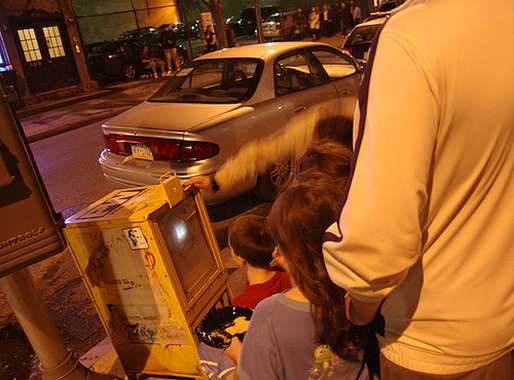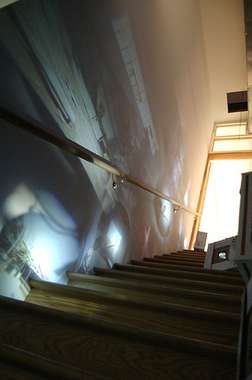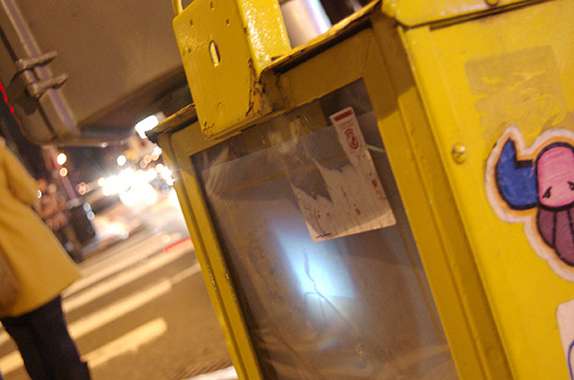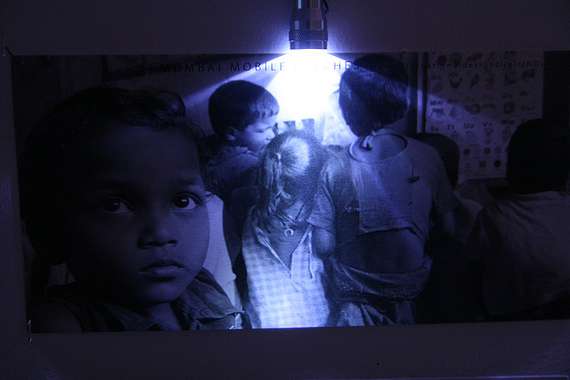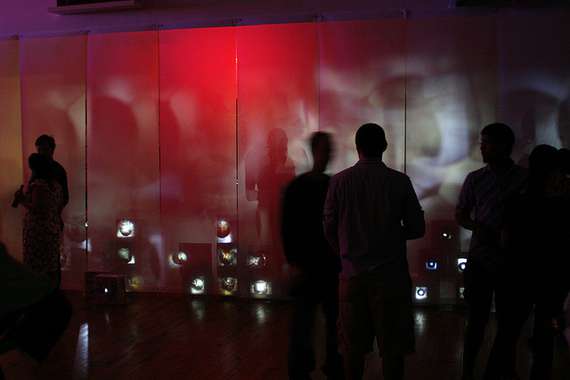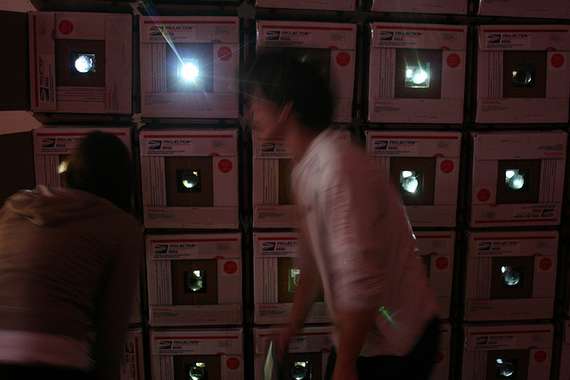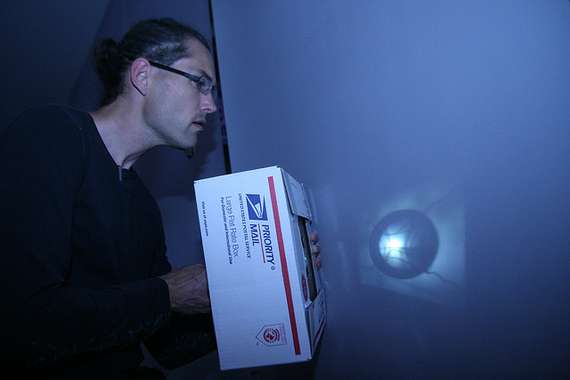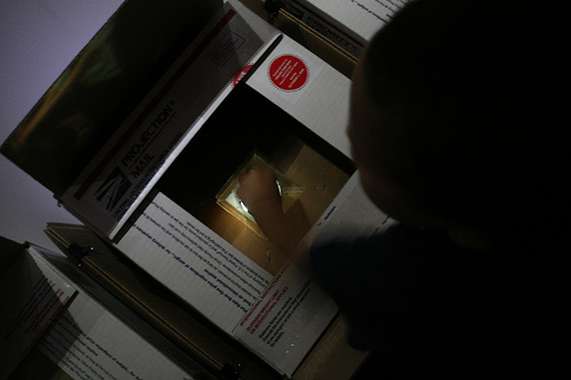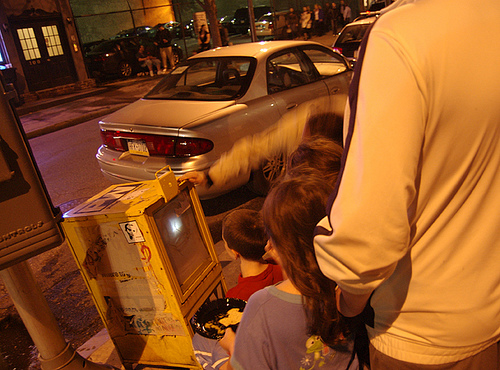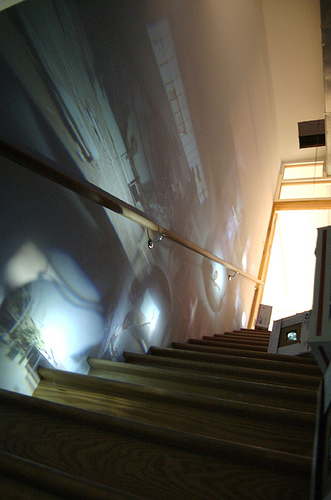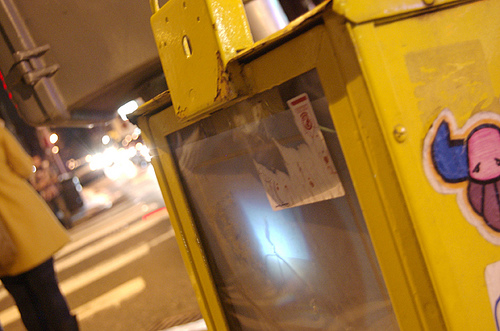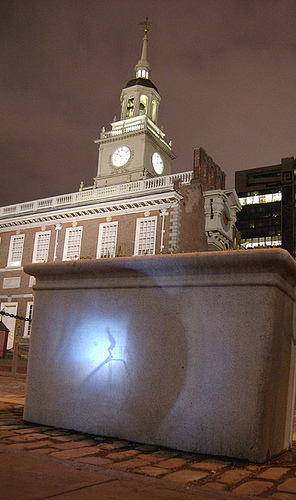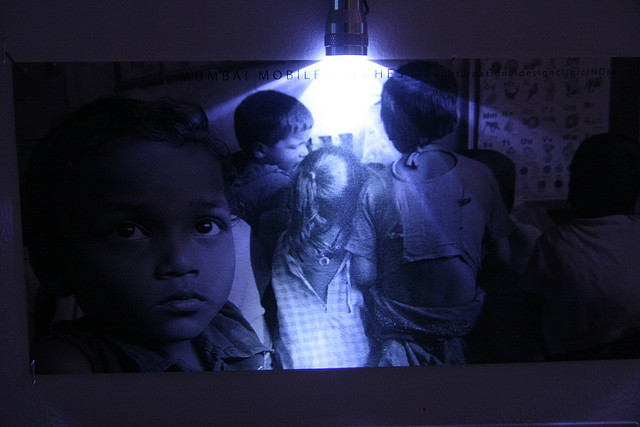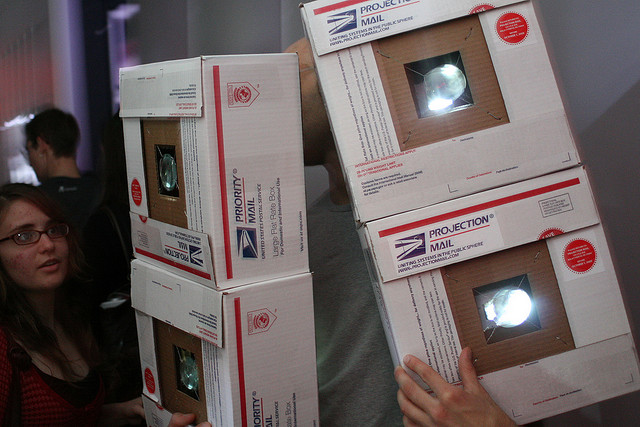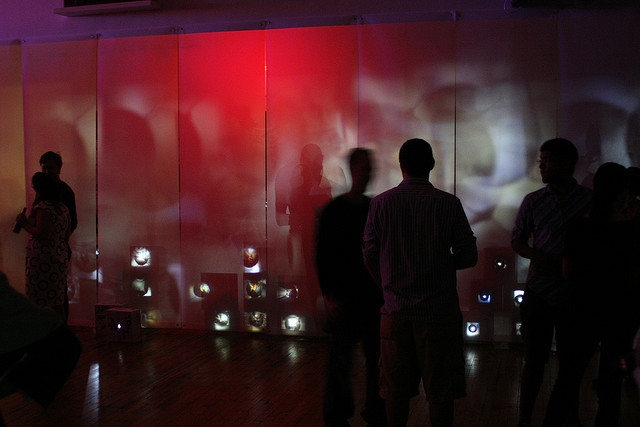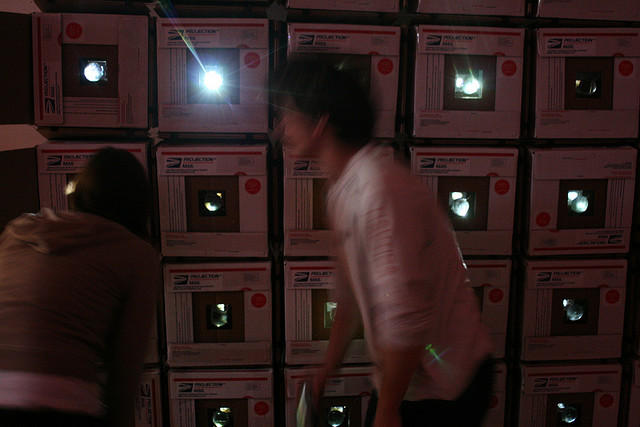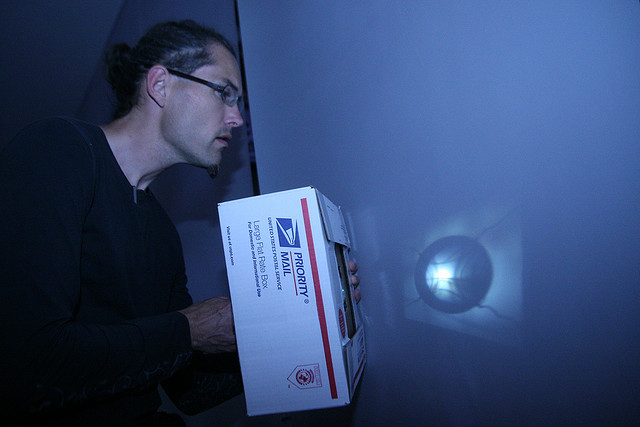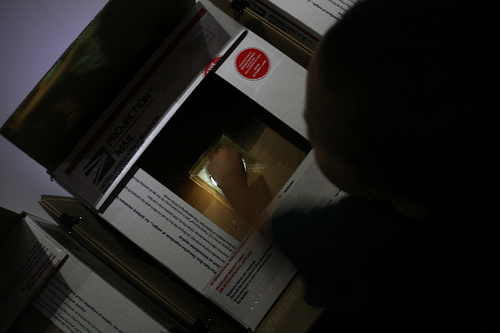PROJECTION MAIL
by surreaLies
This work has been commented by 2 curator(s). Read the comments
Title
PROJECTION MAIL
Headline
UNITING SYSTEMS IN THE PUBLIC SPHERE
Concept author(s)
Scott Shall
Concept author year(s) of birth
1975
Concept author(s) contribution
coordinator
Concept author(s) Country
United States of America
Friendly Competition
Love Conflict Imagination (2010-2011)
Competition category
Visual communication practice
Competition subcategory
moving
Competition field
nonacademic
Competition subfield
artist
Subfield description
This is a mobile piece that occupies space in the public realm.
Check out the Love Conflict Imagination 2010-2011 outlines of Memefest Friendly competition.
Description of idea
Describe your idea and concept of your work in relation to the festival outlines:
This occurrence of the work involves the viewer to question the origination of the work, experiencing the vision of another individual. The translation of the work becomes both relational to the original context and self-relational, creating a critical awareness of one’s own position vis-à-vis the site of the observed. The trans-personal experience thereby created will bring together acts of transition and alienation, fantasy and translation, compelling those engaging the work to trade the position of voyeur (gawking at another, exotic experience) for one that is more personal (building one’s awareness of ‘projecting’ onto a foreign culture offering), interactive (interaction between the given image and the creative potential of the spectator) and expressive (specifically related to their own experience as it relates to the Indian experience).
What kind of communication approach do you use?
Once positioned on-site, the PROJECTION MAILbox [SMALL] will use simple graphic mechanisms to clearly communicate its intent to the now-expanded body of contributors, stimulating them to [re]position the work into unknown contexts, [re]project the image onto unanticipated surfaces, [re]purpose the box (through graffiti or the substitution of images) to new ends and [re]present their movements, insights and photos to an growing body of online contributors.
What are in your opinion concrete benefits to the society because of your communication?
The PROJECTION MAILbox crosses the boundaries of individual bodies to transfer a message through imagery. he size and weight of these projectors, as well as the nature of the projected image, will allow patrons to cultivate new overlaps between these perspectives and their own, convergences which will both reflect and rearticulate the relationship between the work, those viewing it, and, invariably, those responsible for re-creating it.
What did you personally learn from creating your submitted work?
I learned that the effect of a project is not dictated by it's budget.
Why is your work, GOOD communication WORK?
The work provides an equal playing field for all of those involved.
Where and how do you intent do implement your work?
A great of PROJECTION MAILboxes are placed in a single location, with instructions and installed examples also on display. Visitors are encouraged to take a box with them. So that this movement might expand to include publics, spaces and time periods not offered by this exhibition, patrons to both the physical space of the gallery and a parallel online event will be invited to propose alternative venues for the work.
Did your intervention had an effect on other Media. If yes, describe the effect? (Has other media reported on it- how? Were you able to change other media with your work- how?)
Curators Comments
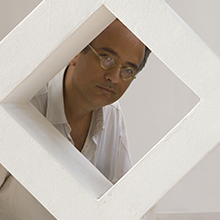
André Vallias
Perception, ubiquity, displacement in a complex, provocative and original art project. Unfoutunately, I found very difficult to have a more intensive perception of the whole work through its web site. I suggest you try to use the same amount of conceptualization in the developpment of an effective internet plattaform. The greatness and complexity of the project deserves it.
"In its appearance, language is descriptive. When you tell your story, you tell it as it was: the magnificent ship, the ocean, the big sky, and the flirt you had, that made the whole trip a delight.
But for whom do you tell it? That's the wrong question. The right question is: With whom are you going to dance your story, so that your partner will float with you over the decks of your ship, will smell the salt of the ocean, will let the soul expand over the sky, and there will be a flash of jealousy when you come to the point of your flirt.
In its function, language is constructive, because nobody knows the source of your story. Nobody knows, or ever will know how it was: because as it was is gone forever.
You remember Rene Descartes, as he was sitting in his study, not only doubting that he was sitting in his study, but also doubted his existence. He asked himself: "Am I, or am I not?"
He answered this rhetorical question with the solipsistic monologue: "Je pense, donc je suis," or in the famous Latin version, "Cogito ergo Sum." As Descartes knew very well, this is language in its appearance; otherwise he would not have quickly published his insight for the benefit of others in his "Discourse de la methode." Since he understood the function of language as well, in all fairness, he should have exclaimed: "Je pense, donc nous sommes," "Cogito ergo sumus" or "I think, therefore we are!"
In its appearance, the language I speak is my language. It makes me aware of myself: this is the root of consciousness.
In its function, my language reaches out for the other: this is the root of conscience. And this is where Ethics invisibly manifests itself through dialogue. Permit me to read to you what Martin Buber says in the last few lines of his book Das Problem der Menschen:
Contemplate the human with the human, and you will see the dynamic duality, the human essence, together: here is the giving and the receiving, here the aggressive and the defensive power, here the quality of searching and of responding, always both in one, mutually complementing in alternating action, demonstrating together what it is: human. Now you can turn to the single one and you recognize him as human for his potential of relating. We may come closer to answering the question "What is human?" when we come to understand him as the being in whose dialogic, in his mutually present two-getherness, the encounter of the one with the other is realized and recognized at all times." Heinz von Foerster

Kevin Yuen Kit Lo
This is a very interesting project as it creates an entirely new channel of public communication that blurs the boundaries between physical and virtual space, between the indivdual and the public image. The posibilities for the boxes are very exciting, and I would love to see the project become widely distributed and implemented in other communities. The installation settings are quite beautiful and I really appreciate the simple and unique engagement it immediately evokes in the user/viewer.
I feel that the presentation of the project, especially in the context of this edition of memefest, is a little clouded by the over abundance of "art-speak". The relationship to the festival outlines is not made expllicit. On a second and third reading, the description does become clearer, however I feel it really takes away from what I essentially understand as a "series of low-fi, distributed, projection boxes".
Furthermore, I'm still unclear as to what the original projected content of the boxes is and how it relates to the Indian context that is mentioned. Are they pictures of individuals, of the environment. Is there a narrative, a political angle. Dismissing the importance of content for the medium itself does an injustice to the origination of the project, and a deeper understanding of the intention behind it.
Nonetheless, the simplicity (in my understanding) of the project, the original conception, and its vast potential make this a very rewarding work, and as mentioned earlier I would love to see it evolve in other contexts.

